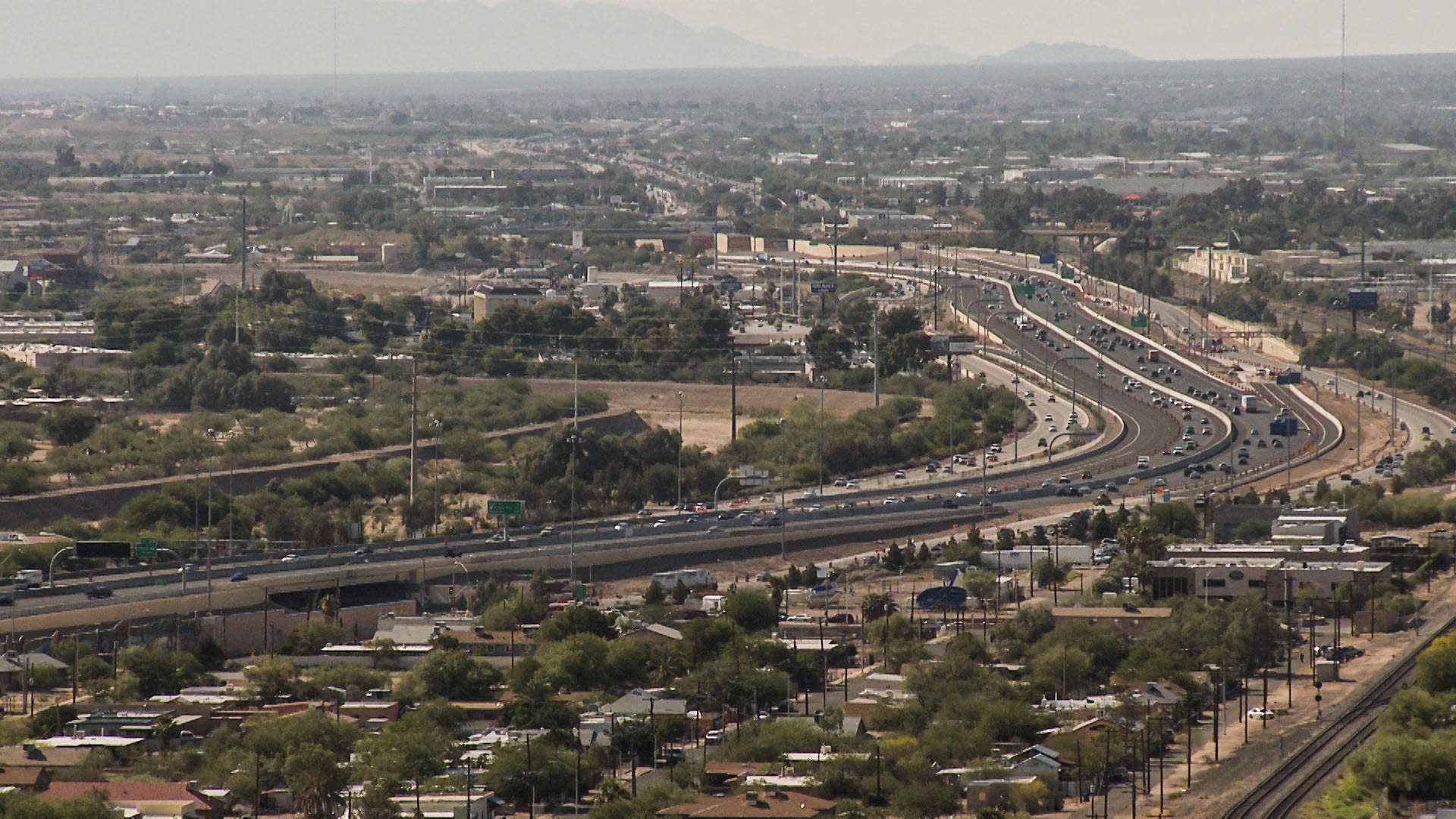 Cars moving through Tucson.
Cars moving through Tucson.
The American Society of Civil Engineers has given America's roads a D rating. But a recent study shows that trying to raise that grade without accounting for climate change could put the country's roadways at risk.
When building or fixing a road, civil engineers choose materials rated for the local climate. Not today's climate, and not tomorrow's, either — but the one that prevailed from 1964-1995.
"As engineers, we fall into a trap of thinking that whatever exists today will exist in the future," said civil engineering expert Shane Underwood, formerly of Arizona State University, who led the Nature Climate Change study.
That process can lead engineers to choose the wrong materials for present or future conditions.
"If we're using the wrong grade, then the roads will not last as long, and if the roads don't last as long, then there's a cost of that — an actual economic cost," Underwood said.
That could run into the tens of billions of dollars nationwide.
Underwood said that municipalities will likely foot most of the bill.
"The cities that maintain their own networks are going to be affected, at least in our estimation, much more than even some of the larger state agencies," Underwood said.
Under future conditions predicted by 19 climate models, Arizona would fall into the bottom third of states whose roadways were affected by climate shifts. The Midwest and Southeast would be hardest hit.
But it's not just the future: The study found that engineers had chosen the wrong pavement grades in 35 percent of recent projects.
"Just ignoring the last 20 years of climate record in this process has an effect," said Underwood.
Underwood added that he hoped the study would inspire engineers to add a "continual evaluation process" to their approach, not just to account for climate shifts, but also for changes in technology and usage.
"The infrastructure we design and build is meant to last for 20 years or 50 years — in the case of some bridges, 100 years," Underwood said. "And it is difficult to try and predict how people will use it that far in the future, but we have to at least make certain realizations that some technologies, some external factors, are evolving."


By submitting your comments, you hereby give AZPM the right to post your comments and potentially use them in any other form of media operated by this institution.